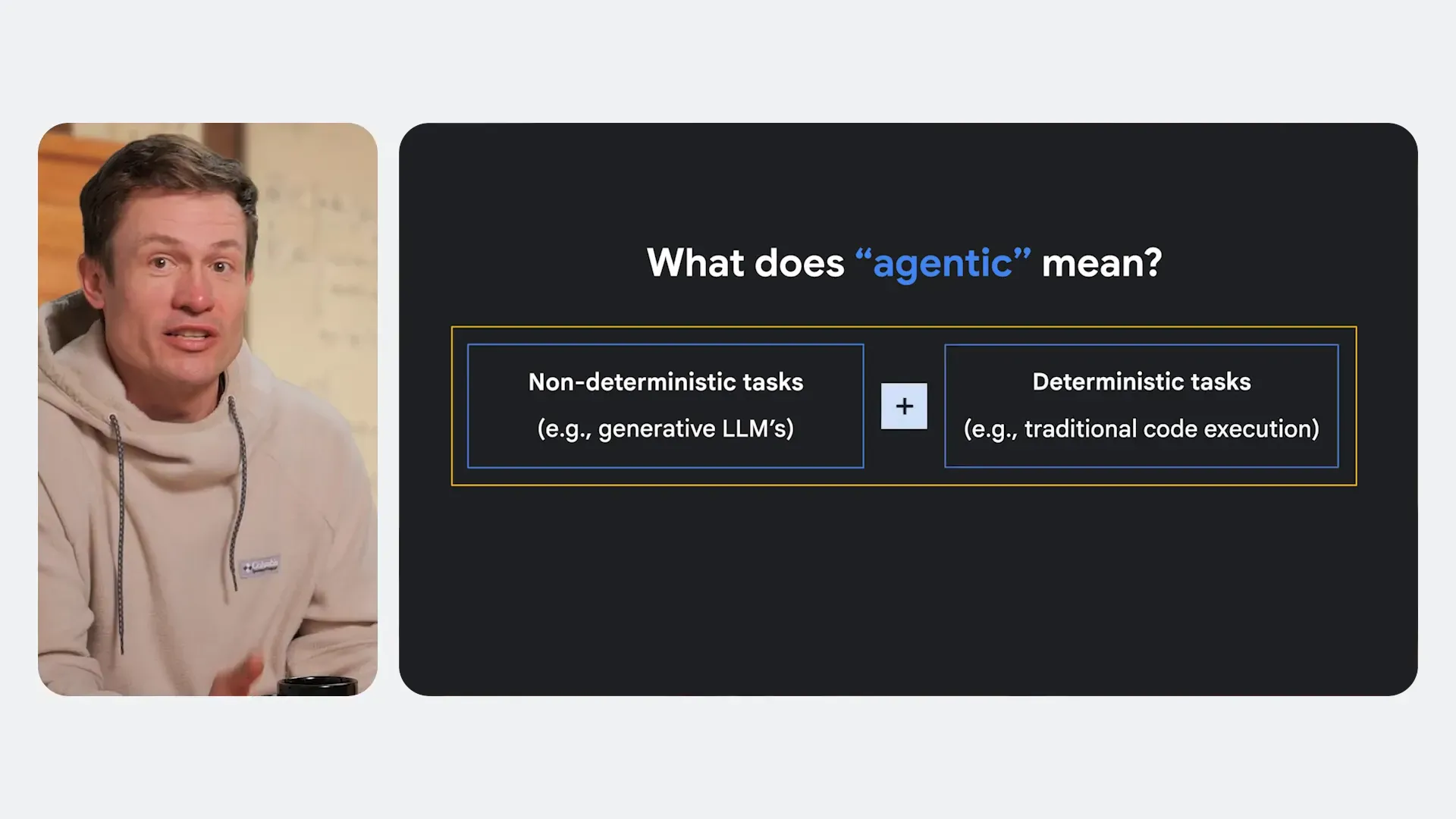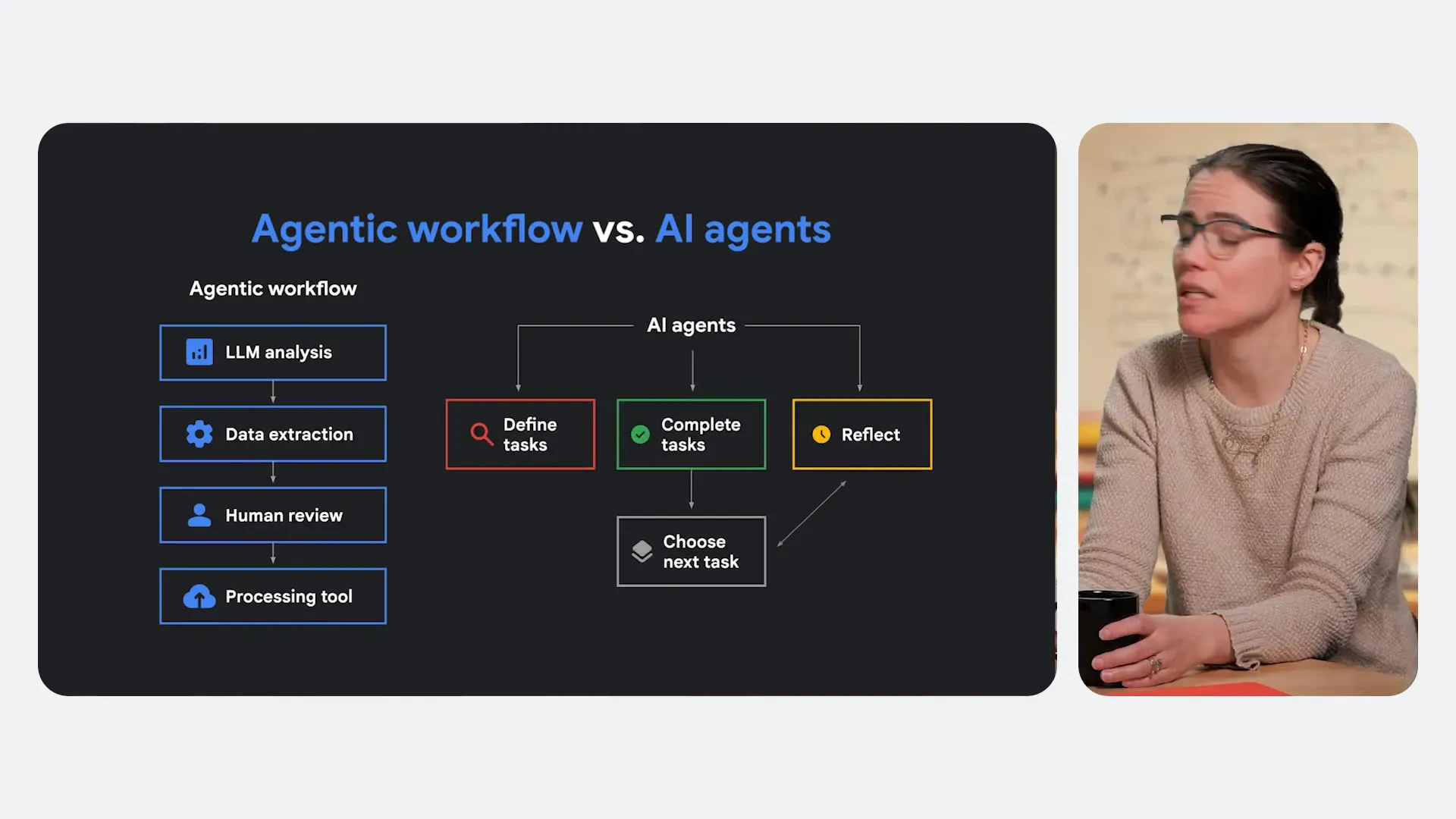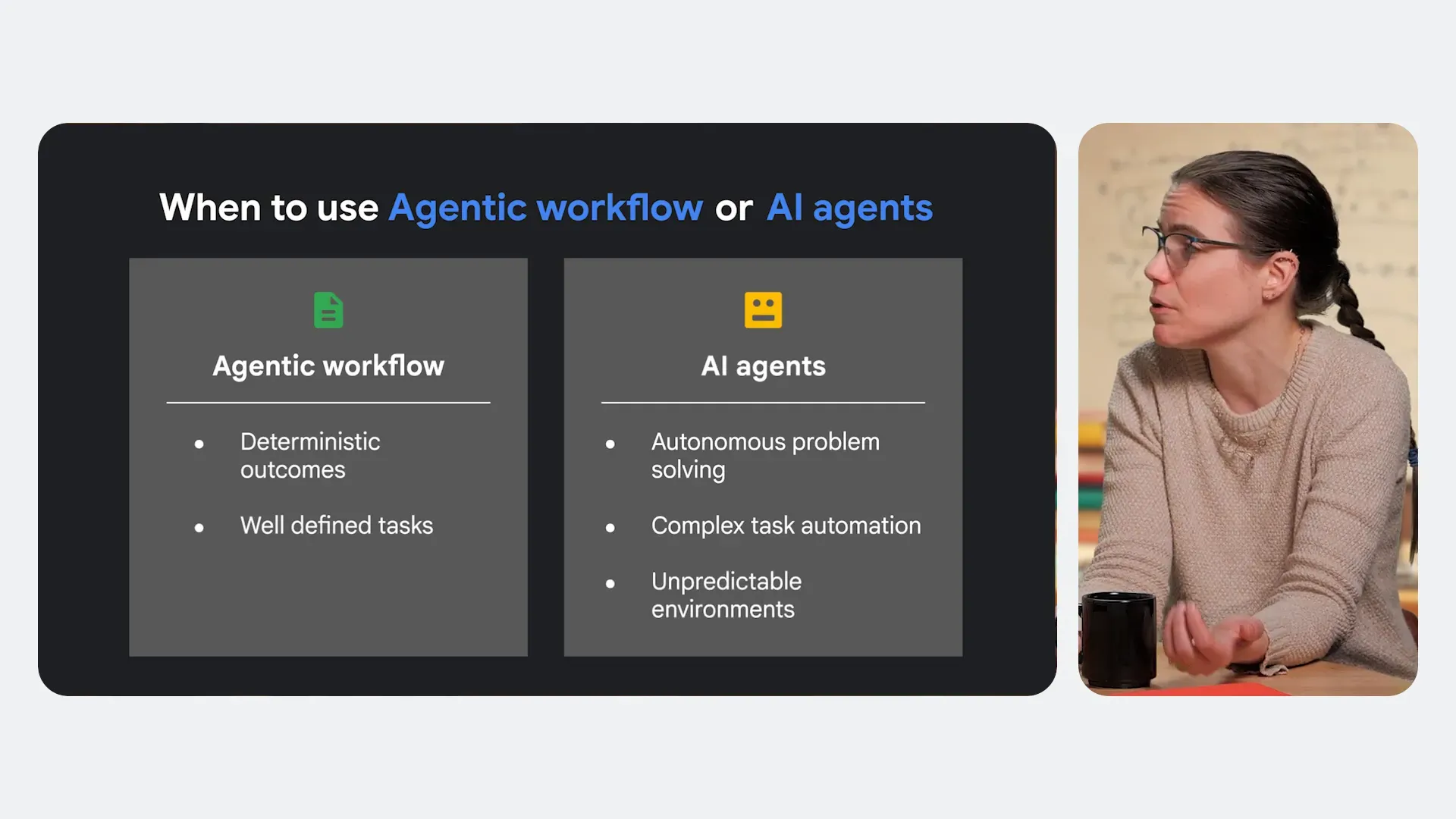In an era where AI is playing an important role in the software and business industry. Understanding the Difference Between Agentic AI with Agentic Workflow Therefore, it is extremely necessary for developers and those interested in this technology. This article will introduce the concept of Agentic AI from an expert's perspective. Google Cloud Tech who have explained the meaning of "agentic" with examples and practical applications so that we can understand and apply it correctly and effectively.
What is Agentic AI? Why know?
The word "agentic" comes from the word agent, which refers to an agent or person who has the ability to make decisions and act independently. In the context of AI, it refers to a system that can perform tasks or solve problems using uncertainty (nondeterminism) and large language models ( Large Language Models – LLM) to create different results each time you work.
generally Agentic AI They will have non-fixed behavior and can link many tasks together in the form of workflow Or an agent system that can make decisions and choose to work in the right order to achieve the set goal.

Difference Between AI Agent and Agentic Workflow
What needs to be understood clearly is the difference between AI Agent and Agentic Workflow In summary:
- Agentic Workflow It is a system with relatively deterministic characteristics, emphasizing decisions and predictable outcomes. For example, the use of LLM as an add-on in some stages of the workflow to process or summarize data.
- AI Agent It is a system that has the freedom to make decisions and choose to work more in a variety of tasks in a non-fixed order. To achieve a set goal, such as giving the agent a goal of "creating a snake game website", the agent will plan and complete the steps on its own.
This difference is very important because choosing to use an Agentic Workflow or AI Agent Depending on the complexity and needs of the task, not all tasks require AI Agent because some tasks with clear procedures and predictable results can be done better and safer.

Examples of Agentic Workflow and AI Agent
To see the picture more clearly. Let's take a look at an example.
Agentic Workflow
Suppose you have an invoice processing system ( invoice processing ) by workflow The LLM will be used in conjunction with other tools to analyze invoices. The user then checks and uploads the information to the processing system. In this case, the workflow also requires human monitoring and the process is predictable.
AI Agent
An example of an AI Agent is to assign a goal to the system, "I want to build a snake game website", and then the agent will plan the task. Determine the sequence of steps and automate the creation of that website, including self-review ( reflection ) to ensure that the work done is in line with the set goals without human intervention to control every step.

When to Use Agentic Workflow or AI Agent?
The key question is, when should we choose Agentic Workflow or AI Agent?
The answer is that not all tasks require AI agents because many tasks that people are trying to create, Agentic Workflow is more adequate and suitable, especially those with clear procedures and accurate results, such as data processing. Summarizing data or work that requires high reliability.
On the other hand, AI agents are suitable for jobs that require freedom of decision-making, such as jobs with clear goals but workflows that may change depending on the situation, or in businesses that want to reduce human intervention and let the system make some decisions on their own.
However, creating an AI Agent must take into account risks, such as agents may make different decisions than humans in certain situations, which can have negative consequences. Therefore, for tasks that require high accuracy and control, you may choose to use an agentic workflow with a human being as part of the process ( Human-in-the-loop ) for added safety.

Summary of knowledge and insights from understanding Agentic AI
Agentic AI is a concept that allows AI systems to have the ability to make decisions and operate more independently. Choosing between Agentic Workflow or AI Agent depends on the nature of the task, complexity, and risk tolerance.
Understanding this difference is crucial to be able to design AI systems that are appropriate for their goals and application contexts. It not only makes the system work better, but also allows for effective risk control and management.
last Learning through Code samples And real-world experiments will help turn these concepts into practical skills and open up the opportunity to develop AI applications that truly meet the needs of businesses and users.
Conclusion from Insiderly
Agentic AI is not just an exciting new technology. Rather, it is a mindset that changes the way AI is developed and used in the real world. Differentiating between Agentic Workflow and AI Agent allows us to plan and design AI systems more appropriately and efficiently.
In many cases, Agentic Workflow is a good answer because it provides a balance between accuracy and flexibility, while AI Agent is ideal for tasks that require autonomy and can handle uncertain situations effectively.
Therefore, the implementation of Agentic AI must start with a careful analysis of the requirements and limitations of the work, as well as being prepared for potential risks. Learning and experimenting through sample code will help developers understand and implement it in practice.
With the right knowledge and tools, Agentic AI will be key to developing more powerful and versatile AI technologies in the future.
Technical Terminology (Jargon)
- Agentic AI: An AI system with the ability to make decisions and operate independently. without being fixed in the sequence of steps.
- Agentic Workflow: AI-based workflows are in some stages, but are still more predictable and easier to control than agents.
- AI Agent: AI system that is assigned goals and can plan Make decisions and automate operations.
- Nondeterminism: uncertainty of results that may vary from time to time to work;
- LLM (Large Language Model): Large language models are trained to understand and generate text efficiently.
- Human-in-the-loop: The presence of humans as part of the decision-making process or control of AI systems


